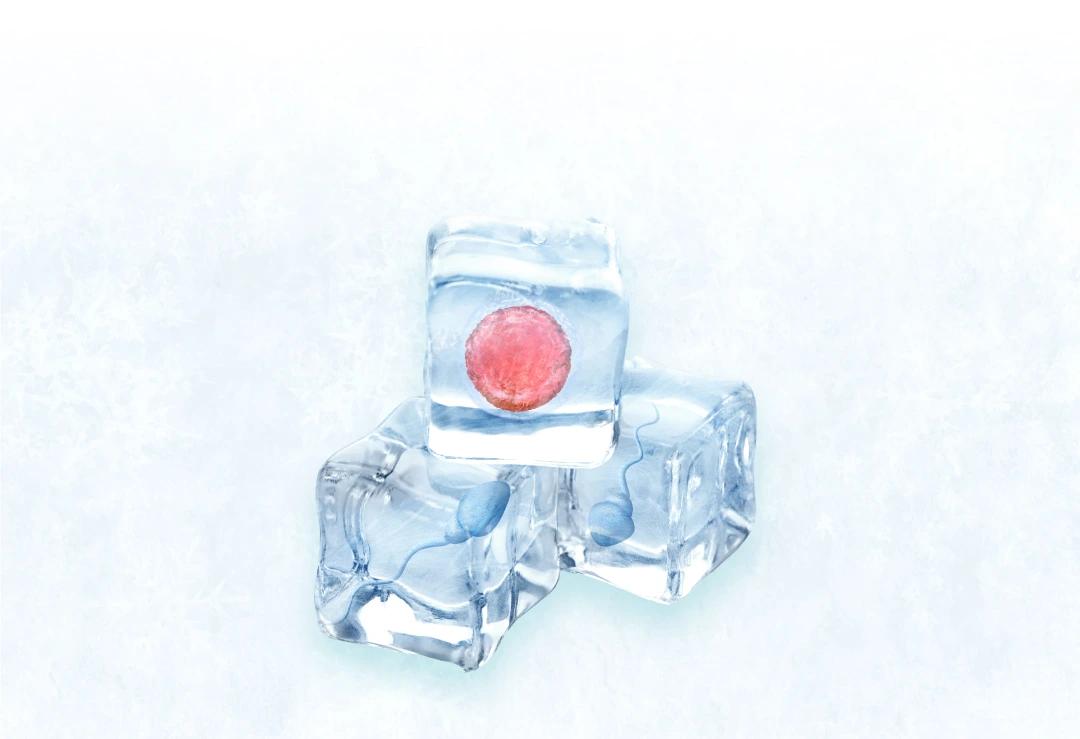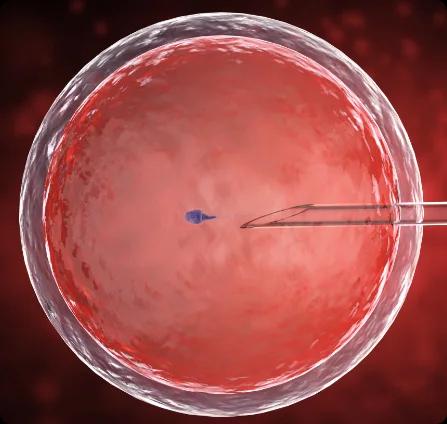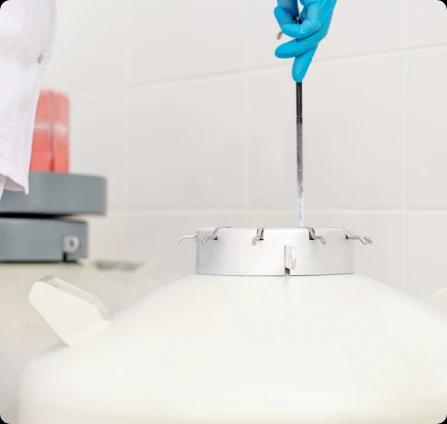
Overview about What is Cryopreservation?
Cryopreservation for fertility is a method of preserving sperm, embryos, or eggs at a subzero temperature (freezing) so that those gametes can be used later in life when needed. Whenever these biological cells are needed, they are thawed and then used in IVF treatment (eggs, sperm, and embryos) or for intrauterine insemination (sperm) respectively.
How does Cryopreservation help?
Cryopreservation leads to better outcomes and offers more chances of success for IVF or IUI treatment. The technique is a way of fertility preservation for those couples who want to use their protected gametes later in life to have biological children. Whenever they want to start a family, they can use their frozen gametes. If anyone in the couple is going through a medical condition like cancer, before taking cancer treatment, he or she may also opt to freeze their eggs or sperm to restore the quality of the gametes. Sometimes, getting older could also be one of the reasons.

The benefits of freezing sperm and eggs:
Cryopreservation of sperm allows a male to preserve fertility by using his sperm to have kids. And he can also donate frozen sperm to an infertile or same-gender couple. Sperm freezing is also done to restore sperm quality because, with advancing age, sperm quality starts declining. This method is a successful way to restore male fertility as well. The procedure also helps cancer patients; such males may preserve their sperm before cancer treatment or chemotherapy. This technique helps in IVF treatment (males), artificial insemination, as well.
Cryopreservation of eggs is also helpful in the same way as the male sperm freezing technique. This technique helps in IVF treatment (females).
Who should opt for Cryopreservation?
The aim of preserving the gametes or embryos is to store them for an indefinite period of time by using the freezing process to stop the natural metabolic activities of cells. In this way, anyone's fertility can be preserved. This process is usually needed for those who are going to have radiation therapy due to some health issue like cancer, or those who want to delay their pregnancy for personal reasons, or couples with some physical issues or abnormalities, or those who have some genetic history of abnormalities and early menopause, or whose first IVF cycle fails.
Cryopreservation is the technique of preserving biological cells at a sub-zero temperature for future needs.
The complete steps are as follows:
Mixing of CPAs with cells
In this step, cryoprotectants or cryoprotective agents like FBS, glycol, or glycerol are incorporated to prevent crystallization in the sample of embryos, sperm, or eggs.
Cooling and storage of cells
In the second step, freezing is done by using the most appropriate method to protect the cells from damage. Therefore, the sample is placed or stored at 196 degrees centigrade in liquid nitrogen in a sealed storage vessel (labelled glass or plastic straw). This technique of freezing is called vitrification (converting tissue or cells into solid form without crystallization or preventing ice formation inside the cells or tissue).
Warming of cells
Thawing or warming of cells is a simple process of removing biological cells or tissue from liquid nitrogen and then warming them up at body temperature on the day of the IVF procedure.
Removal of CPAs from the cells
In this step, the protective chemicals, or CPAs, are removed from the tissues or biological cells. So that the cells can be obtained in their natural and real form without any chemical or cryo-protectant.At the end, cell viability evaluation is done.
This process (Cryopreservation) helps in freezing and also thawing the gametes (sperm and egg) or embryos so that they can be used when needed or if the first cycle of IVF fails.
With the customer’s consent, embryos, eggs, or sperm can be preserved for up to 10 years. But in some situations, like premature infertility or patients who have to undergo cancer therapy, gametes can be stored for up to 50 years.


Cryopreservation process and cost
Embryos, or sperm or eggs, can be preserved for a long time through the Cryopreservation process. It is a method of keeping the cell alive for an extended period of time at a freezing temperature (-196 degrees Celsius). To ensure that the biological cells survive such a low temperature, some cryopreservant are included during the freezing process to regulate the freezing rate.
The Cryopreservation method involves substantial cost since it needs very special techniques and conditions to preserve a biological cell, so it may be anywhere from 100,000 INR to 150,000 INR per year.
Myths around Cryopreservation
A. Egg freezing is a new technique.
Fact: No, the procedure is successful and well known worldwide.
B. Cryopreservation is harmful.
Fact: There is no evidence that Cryopreservation of gametes and embryos causes harm to the women or their future offspring.
C. Cryopreservation can reduce fertility in the future.
Fact: No. In fact, this method can preserve or restore the future fertility of a male or female instead of reducing it.
Why Choose Crysta IVF for Your Fertility Journey?

20+ Years Experienced Doctors
Crysta IVF has highly experienced doctors who provide accurate treatment according to your problem.

High Success Rate
Crysta IVF brought smiles to 20,000+ of couples’ faces creating a high success rate for conceiving a child.

Personalised Care
Every patient's journey at Crysta IVF is customised to meet their specific needs and circumstances with compassion and care.

Advanced ART Labs
With the use of modern labs and cutting-edge technology, Crysta IVF provides the highest quality of reproductive care.

Transparent Treatment Pricing
Crysta IVF uses a transparent pricing system to improve patient experience and keep patients financially secure.

Trustworthy and Safe
There are no long-term risks or complications associated with the IVF process. Along with its efficacy, Crysta IVF keeps your identity secure.








